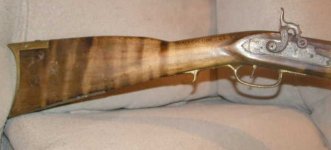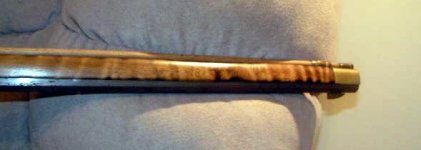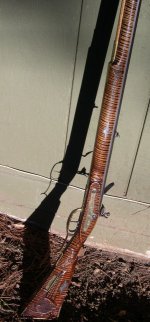CosmoLover
New member
I've seen plenty of tiger stripped stocks, especially on some m1 carbines. I particularly like the look of the Russian SKS's with the cloudy black mixed with the red shellac.
Now here the question, is it caused from the wood's character, and if so, can I duplicate it artificially? I was thumbing through a new book I just picked up, entitled "The Peacmakers," which chronicles the weapons of the west. There was on Indian musket in particular with alternating light/dark stripes, to which the author said was "artificially stripped for aesthetics."
I was thinking of experimenting on an old stock with using either a Zippo(which would give off a nice carbon soot), an old kerosene lamp with an extra high wick, or a small torch. Theoretically, wouldn't any of those(in varrying degrees anyways), stain the wood with soot, giving me my desired look? After that, I would plan on sealing it in with some poly in semi-gloss.
Has anyone ever attempted this, and if so, any pointers? Am I going in the wrong direction? ie- should I use dark stains instead of soot? I'd like to be able to duplicate the below pic. Thank you.

Now here the question, is it caused from the wood's character, and if so, can I duplicate it artificially? I was thumbing through a new book I just picked up, entitled "The Peacmakers," which chronicles the weapons of the west. There was on Indian musket in particular with alternating light/dark stripes, to which the author said was "artificially stripped for aesthetics."
I was thinking of experimenting on an old stock with using either a Zippo(which would give off a nice carbon soot), an old kerosene lamp with an extra high wick, or a small torch. Theoretically, wouldn't any of those(in varrying degrees anyways), stain the wood with soot, giving me my desired look? After that, I would plan on sealing it in with some poly in semi-gloss.
Has anyone ever attempted this, and if so, any pointers? Am I going in the wrong direction? ie- should I use dark stains instead of soot? I'd like to be able to duplicate the below pic. Thank you.

Last edited:





